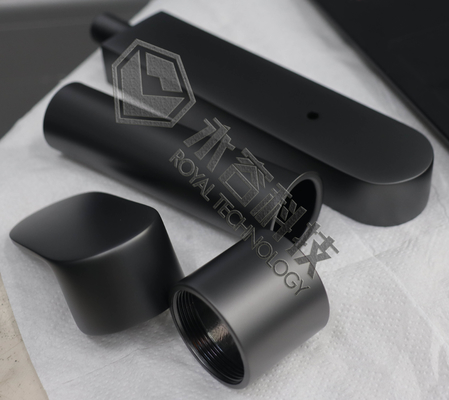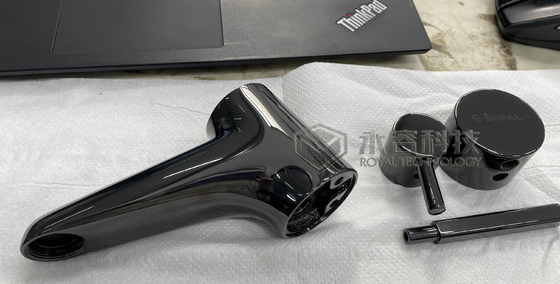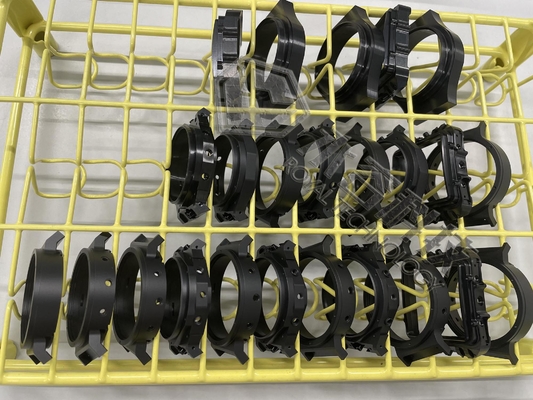
|
|







| Brand Name: | ROYAL TECHNOLOGY |
| Model Number: | RT1612-DLC |
| MOQ: | 1 |
| Price: | NEGOTIABLE |
| Payment Terms: | L/C, T/T |
| Supply Ability: | 5 sets/month |
PVD, or Physical Vapor Deposition, is a process used to apply coatings to various surfaces, including watches, faucets and jewelry. These coatings, such as Diamond-Like Carbon (DLC), Titanium Nitride (TiN), Titanium Carbon Nitride (TiCN), Titanium Aluminum Nitride (TiAlN), and Rose Gold PVD, provide enhanced durability, scratch resistance, and aesthetic appeal. They are popular choices among watch manufacturers looking to create a specific color, style, and performance characteristics.
DLC is one of the most common PVD coatings used in watches. As a carbon-based coating, it offers high hardness, low friction, and excellent scratch resistance. It can range from glossy black to matte finishes, giving watches a sleek and modern look.
TiN is a gold-colored PVD coating that gives watches a luxurious appearance. It combines good scratch resistance with a high affinity for metals like stainless steel. It is often used to create gold-colored watches without using actual gold.
TiCN combines the properties of titanium nitride and DLC, resulting in a dark gray or gunmetal appearance. It is highly durable and resistant to corrosion, making it a good choice for rugged or sporty watch designs.
TiAlN is a combination of titanium, aluminum, and nitrogen. It provides a dark gray or black color and has excellent hardness and wear resistance. TiAlN coatings are often used in high-performance and tool watches.
Rose gold PVD coatings use a combination of different metals, including gold, copper, and sometimes silver. This coating gives watches a warm, reddish-gold color and provides an elegant and luxurious look.
While PVD coatings significantly enhance the durability and scratch resistance of watches, they can still wear off over time with extensive use. Thus, it is important to consider all the options carefully before selecting a coating for a timepiece.
Technical Specifications
Flexible configurations: the machine is set according to coating processes and customers’ requirements
| Description | RTAS1250 | RTAS1612 |
| Deposition Chamber (mm) | φ1250 * H1250 |
φ1600 * H1250
|
|
Planetary Driving Effective Coating Area (mm) |
8: φ270*H850 10: φ230*H850 |
10: φ300*H850 16: φ200*H850
|
| Circular Arc Cathode (sets) | 7 | 12 |
| Cylinder Sputtering Cathodes (pairs) | 3 /4 | 4 / 6 |
|
Pulsed Bias Power (KW) |
36 | 48 |
| DC / MF Sputtering Power (KW) | 36 | 4*36 |
| Arc Power (KW) | 7*5 | 12*5 |
| Vacuum Pumps |
2* Turbo Molecular Pumps 1*SV300B 1*WAU1001 1*TRP60 |
3* Turbo Molecular Pumps 2*SV300B 1*WAU2001 1*TRP90 |
| Max. Power Consumption (KW) | 200 | 245 |
| Average Power Consumption(KW) | <75 | <100 |
| Operation Space (L*W*H) mm | 4300*3700*2800 | 5000*4000*2800 |
PVD coatings offer several key advantages compared to other types of watch coatings. From durability and aesthetics to uniformity and environmental friendliness, PVD coatings provide a superior solution for watch manufacturers and consumers alike.
1. Durability: PVD coatings are highly durable and offer excellent resistance to wear, scratches, and corrosion. The deposition process creates a hard and protective layer on the watch surface, enhancing its longevity and reducing the risk of damage.
2. Aesthetic Options: PVD coatings provide a wide range of color options, allowing watch manufacturers to create various finishes and styles. From black DLC coatings to gold-toned TiN coatings, PVD offers versatility in achieving different aesthetic preferences and can mimic the appearance of precious metals.
3. Uniformity: PVD coatings provide a uniform and consistent layer on the watch surface, ensuring an even distribution of color and protection. This results in a visually pleasing and high-quality finish, enhancing the overall appearance of the watch.
4. Thin Coating Thickness: PVD coatings are typically applied in thin layers, ranging from a few micrometers to tens of micrometers. This allows the watch to maintain its original dimensions and does not significantly affect the weight or functionality of the timepiece.
5. Environmental Friendliness: PVD coating is a relatively environmentally friendly process compared to other coating techniques. It is a dry process that does not produce harmful byproducts or require the use of harsh chemicals, making it a more sustainable choice.
6. Compatibility with Different Materials: PVD coatings can be applied to a wide range of materials, including stainless steel, titanium, ceramic, and even some plastics. This versatility allows watch manufacturers to apply PVD coatings to various components of the watch, such as cases, bezels, and bracelets, ensuring consistent protection and aesthetics.
7. Cost-Effectiveness: PVD coatings are generally more cost-effective compared to other coating methods, such as electroplating or ion plating. The process is efficient, and the equipment required for PVD deposition is relatively accessible, making it a viable option for both high-end and mid-range watches.
Overall, PVD coatings offer a combination of durability, aesthetic versatility, and cost-effectiveness, making them a popular choice for watch manufacturers. They provide enhanced protection and visual appeal to timepieces, ensuring that they can withstand daily wear and maintain their appearance for an extended period.
Cathodic arc deposition and magnetron sputtering are two common methods used for DLC coating in the PVD (Physical Vapor Deposition) process. Let's take a deeper look into understanding the differences between the two techniques.
Cathodic arc deposition can be broken down into five key steps:
Magnetron sputtering also consists of five distinct steps:
Both cathodic arc deposition and magnetron sputtering have their advantages and limitations. The choice of method depends on factors such as the desired coating properties, deposition rate requirements, equipment availability, and the expertise of the coating facility. Watch manufacturers may select the method that best suits their specific needs and quality standards.
We provide technical support and service for all our PVD Vacuum Coating Machines.
Our experienced team of technicians can provide assistance with installation, maintenance, and troubleshooting.
We offer a range of services, including:
We are committed to providing the best possible service and support for our PVD Vacuum Coating Machines.